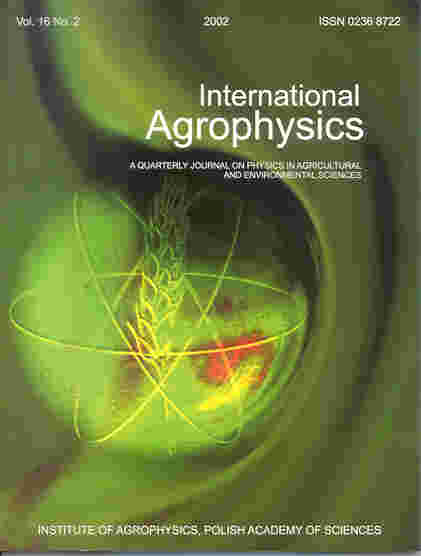|
|
|

|
|
| International Agrophysics |
| publisher: | Institute of Agrophysics
Polish Academy of Sciences
Lublin, Poland |
| ISSN: |
0236-8722 |
vol. 9, nr. 1 (1995)
|
|
|
previous paper back to paper's list next paper
|
|
|
Statistical models for predicting aggregate stability from intrinsic soil components
|
|
| (get PDF ) )
|
|
|
P. Bazzoffi1, J.S.C. Mbagwu2, W.J.E. Chukwu3
|
|
|
1 Istituto Sperimentale'per lo Studio e la Difesa del Suolo, Piazza M. D'Azeglio 30, 50121 Firenze, Italy |
|
|
2 Department of Soil Science, University of Nigeria, Nsukka, Nigeria |
|
|
3 Department of Statistics, University of Nigeria, Nsukka, Nigeria |
|
|
vol. 9 (1995), nr. 1,
pp. 1-9
|
|
|
abstract
The objective of this study was to evaluate the nature of the relationship between the water-stability of soil aggregates and some physical, chemical and mineralogical properties of surface (0-20 cm) soils from central Italy. The index of stability used is the mean-weight diameter of water-stable aggregates (MWD). The ratio of total sand to clay which correlated negatively with MWD (r=-0.638) is the physical property which explained most of the variability in aggregate stability. The chemical properties which correlated best with aggregate stability are FeO (r=0.671), CaO (r=0.635), CaCO3 (r=0.651) and SiO2 (r=-0.649). Feldspar, chlorite and calcite are the minerals with the most controlling influence on MWD with respective r values of -0.627, 0.588 and 0.550. The best-fit model developed from soil physical properties explained 59 % of the variation in MWD with a standard error of 0.432. The best-fit model developed from chemical properties explained 97 % of the variation in MWD with a standard error of 0.136 and that developed from mineralogical properties explained 78 % of the variation in MWD with a standard error of 0.222. Also the closest relationship between measured and model-predicted MWD was obtained with the chemical properties-based model (r=0.985), followed by the mineralogical properties-based model (r=0.884) and then the physical properties-based model (r=0.656). This indicates that the most reliable inference on the stability of these soils in water can be made from a knowledge of the amount and composition of their chemical constituents.
|
|
keywords
aggregate stability, soil properties, statistical models
|
|
|
|
|
|
|